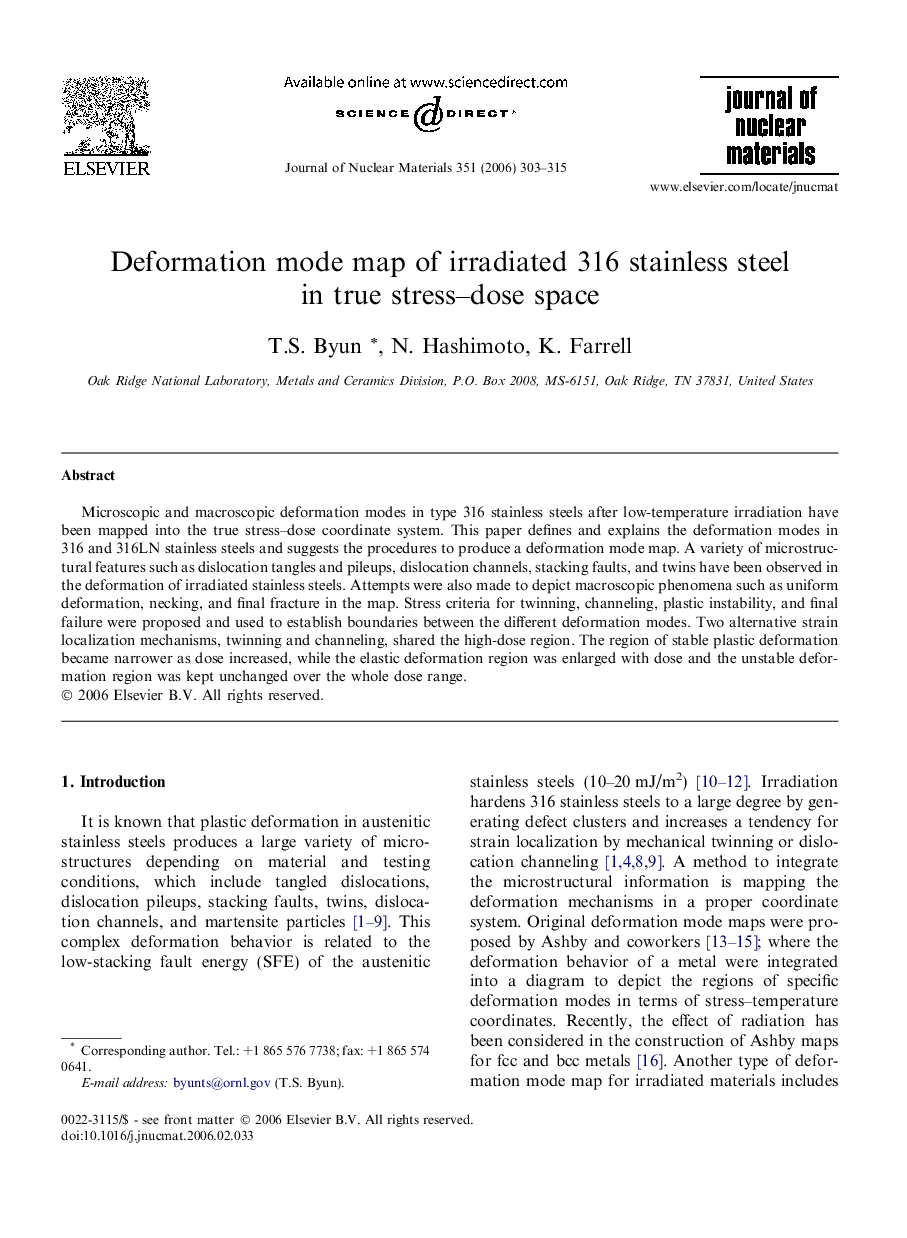| Article ID | Journal | Published Year | Pages | File Type |
|---|---|---|---|---|
| 1569886 | Journal of Nuclear Materials | 2006 | 13 Pages |
Abstract
Microscopic and macroscopic deformation modes in type 316 stainless steels after low-temperature irradiation have been mapped into the true stress-dose coordinate system. This paper defines and explains the deformation modes in 316 and 316LN stainless steels and suggests the procedures to produce a deformation mode map. A variety of microstructural features such as dislocation tangles and pileups, dislocation channels, stacking faults, and twins have been observed in the deformation of irradiated stainless steels. Attempts were also made to depict macroscopic phenomena such as uniform deformation, necking, and final fracture in the map. Stress criteria for twinning, channeling, plastic instability, and final failure were proposed and used to establish boundaries between the different deformation modes. Two alternative strain localization mechanisms, twinning and channeling, shared the high-dose region. The region of stable plastic deformation became narrower as dose increased, while the elastic deformation region was enlarged with dose and the unstable deformation region was kept unchanged over the whole dose range.
Related Topics
Physical Sciences and Engineering
Energy
Nuclear Energy and Engineering
Authors
T.S. Byun, N. Hashimoto, K. Farrell,
